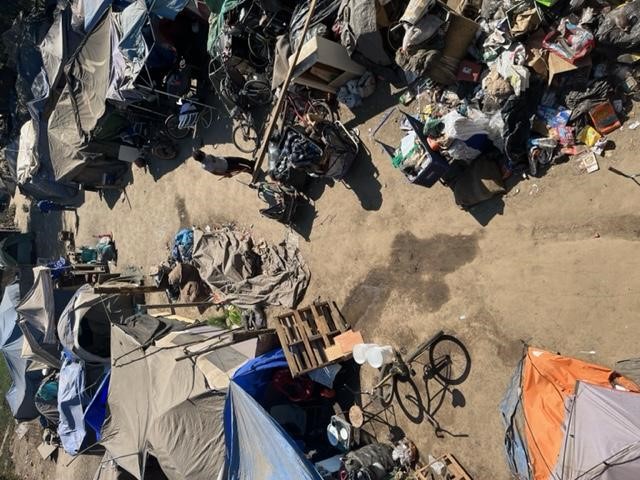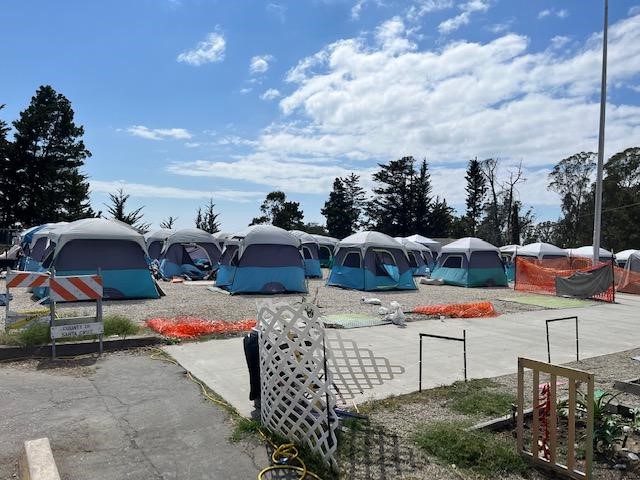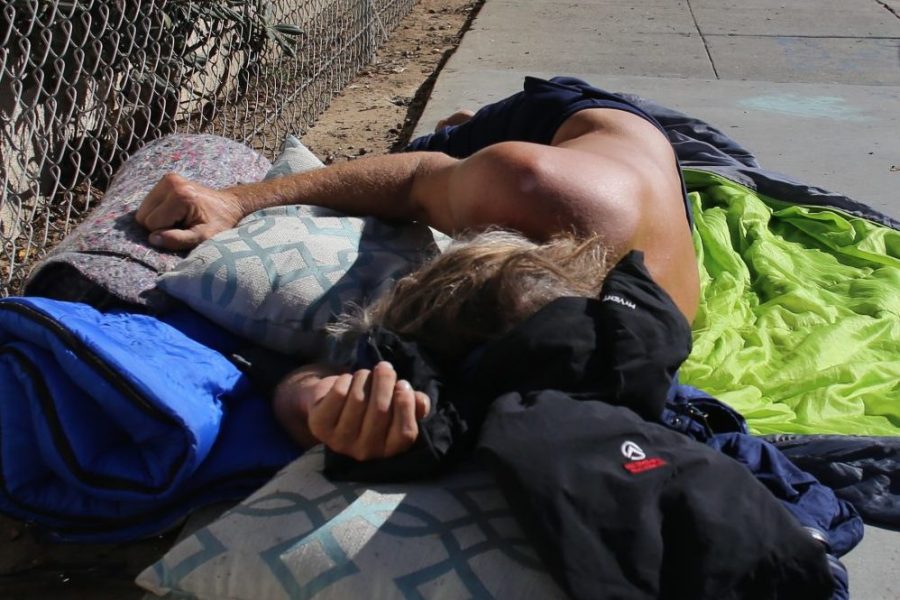- 1. Santa Cruz-Watsonville, CA
- 2. Salinas, CA
- 3. Santa Maria-Santa Barbara, CA
- 4. Los Angeles, CA
- 5. San Luis Obispo, CA
- 6. San Jose, CA
- 7. Honolulu, HI
- 8. New York City, NY
- 9. Santa Barbara, CA
- 10. Eugene, OR
- 11. San Francisco, CA
- 12. Turlock, CA
- 13. Seattle-Tacoma, WA
- 14. Stockton, CA
- 15. Springfield, MA
The epicenter of the problem in Santa Cruz is a section of San Lorenzo Park named the Benchlands, a low-lying grassy field that runs along the San Lorenzo River for a few hundred yards.
I first visited the park as a boy in the summer of 1977 for an arts festival. The not yet famous Brothers Karamazov acrobats delighted the audience with their comedy, juggling, and acrobatics. People my solidly middle-class dad referred to as “hippies” were selling arts and crafts, musicians rotated on the stage, and I ate food my British mom would never have thought to cook. For a 14-year-old boy raised in the Blossom Valley of South San Jose, it was an eye-opening musical, visual, and gastronomic blast and I loved it. That summer my teenage resentment of being moved away from my friends began to disappear. Except for college, time in the military, and some overseas work, Santa Cruz has been my home ever since.
On September 12, I returned to the Benchlands. Most of San Lorenzo Park, its playground, duck pond, and small grassy amphitheater, is now closed and surrounded by cyclone fencing and “no trespassing” signs.
What’s open is this:

A swath of pop-up tents, tarps, people, and the detritus of their presence. Unofficial estimates from reluctant to speak homeless advocates and city staff put the population at 300-500. In the crowded mass, it felt like many more.
The address of the park is 137 Dakota Ave. I parked there and watched a constant stream of cars driven by men who were either meeting others and doing quick hand to hand transactions or picking up and dropping off women who emerged and disappeared into the camp after 15 minutes in a car.
I walked from Dakota Ave. past the fencing and down a well-worn path that bisects the encampment, striking up conversations as I did. What I learned from them both confirmed and debunked much of what is being said about homelessness. Drug use was common and open. Glass pipes and needles are both in use and discarded. Liquor is everywhere one looks. I spoke with a man sitting in a popup who said he lives in nearby Capitola but would come to guard the home of his friends while they were away. He said theft is a constant reality as are the beatings of residents caught attempting to steal from untended camps. I suspected his reasons were also financial. His cousins sat nearby. One lived there and another who had obtained veteran housing was “just visiting.” Both were intoxicated. Everyone seemed to be on cell phones, have cigarettes and a bottle, and no one appeared hungry. I asked where they ate and they rattled off the names of nearby fast-food outlets and markets. Cash didn’t seem to be a problem.
Some shouts went out warning of an approaching police patrol. The officers soon arrived and knew them all by name. No effort is made to hide their drugs and alcohol. After warning them of a predicted storm and news of the camps’ impending closure, the officers went on their way.
The police are busy. Law enforcement sources told me that in 2021, the Benchlands generated approximately 1500 calls for service, resulting in 150 arrests.
I stayed until I felt my presence was an annoyance and continued my walk upriver. I worked in Santa Cruz law enforcement for 12 years and often encounter past victims, suspects, witnesses, and arrestees. But not one person here was familiar. People I spoke with were from everywhere but Santa Cruz. Oakland, LA, Reno, and even Baton Rouge were mentioned as being home. Of the 14 people I contacted – only 6 actually lived in the camp – the rest were “visiting.” None appeared to have visual symptoms of mental illness although I am certain a consistent diagnosis would be addiction. The Benchlands was another of what Michael Shellenberger calls “open air drug markets”
One topic pervaded all conversation – the closure of the Benchlands. The City of Santa Cruz was beginning a phased closure – as sections are evacuated, they will be fenced and cleaned. During the first phase, the people living in that section simply collapsed into the still open sections. Mindful of Martin v Boise, the City has contracted with the Salvation Army to operate a shelter at the National Guard Armory. Unfortunately, no one I spoke to was willing to move there. The consistent reason – “too many rules”. When I asked what rules they wanted to avoid, the answers were a curfew, being too far from downtown, and a no drug and alcohol policy.
I went to the Armory and it was everything the Benchlands wasn’t.

Rows of orderly tents on gravel that won’t turn into mud, showers, a shuttle service, healthcare, a small garden, firefighting equipment and, in the words of the well-organized and busy manager, “three squares a day” await the homeless of the Benchlands. With all that, however, is a prominent list of rules posted outside the camp office which confirms why they will stay away. They are the same rules the rest of us live by everyday.
The city’s motivation to remove the Benchlands camp is obvious. It’s a fetid and filthy place that lies within a two-minute walk over a footbridge to downtown. It’s also the perfect base for thieves, drug dealers, and prostitutes to ply their trade. While I’m certain the city will close the Benchlands and am equally certain that it will spring up again nearby – the power of addiction, and the laws of supply and demand will defeat the city and the well-meaning Christians they’ve hired.
Steve Smith is a senior fellow in urban studies at the Pacific Research Institute.


